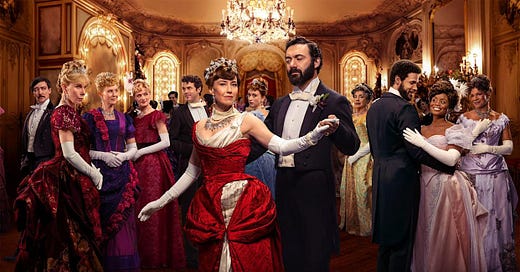Corsets, Carriages, and Cutthroat Society. "The Gilded Age" is back!
The world of corsets, carriages, and cutthroat society rules in the return of The Gilded Age for Season 3. HBO’s opulent period drama created by Julian Fellowes raises the stakes this season with more emotional intensity, powerful performances, and sharper social commentary. Season 3 debuted Sunday, June 22, at 9/8c on HBO.
Set in the 1880s in New York City, The Gilded Age follows the ongoing cultural and class clash between the “old money” aristocracy and the “new money” industrialists. Season 3 picks up with the drama that kept us glued at the end of Season 2; there are of course familiar tensions but Season 3 propels the drama into fresh territory. Divorce, death, and transcontinental ambition collide, changing the lives of nearly every main character.
This season, the show leans into weightier plotlines while still delivering its signature glamor and spectacle. Gone are the days of slow pacing as Season 3 wastes no time diving into societal battles, personal betrayals, and family reckonings.
At the heart of the season lies Bertha Russell, once again brought to life with astonishing range by Carrie Coon. As she continues her relentless push to gain legitimacy among New York's elite, Bertha faces a new challenge in the form of her daughter Gladys’s resistance to an arranged marriage designed to elevate the family’s status. This conflict pits mother against daughter and forces Bertha to reflect on the costs of social climbing.
Meanwhile, George Russell, played with stoic strength by Morgan Spector, undertakes a massive and risky railroad expansion across the country. His storyline is about business as always plus legacy and how far one man is willing to go to define his empire. The Russell marriage remains one of the show’s most compelling partnerships, equal parts strategic alliance and emotional anchor.
One of the most powerful storylines this season belongs to Peggy Scott (Denée Benton), the ambitious Black journalist and activist. Her journey takes a deeper turn as she navigates the racial and gender dynamics of both the white upper class and the Black elite. Season 3 explores Peggy’s relationship with a new love interest, a doctor who challenges her emotionally and intellectually.
The character of Peggy makes the show feel more grounded and real compared to its counterpart Downton Abbey which barely had any diversity. Rooting for Peggy week to week is a highlight.
Change also knocks on the door of the traditionalist Van Rhijn household. When Ada Brook (Cynthia Nixon) unexpectedly inherits a large fortune, she and her domineering sister Agnes (Christine Baranski) clash over how the newfound wealth should be used. Ada begins to assert her independence, confusing everyone in the house.
Agnes, a bastion of old money conservatism, is forced to grapple with shifting societal values as younger members of her family embrace new ways of living and thinking. Which makes Agnes such an interesting character considering her relationship with Peggy Scott. She will not stand for racism and that characteristic makes her likeable even though one should find her annoying.
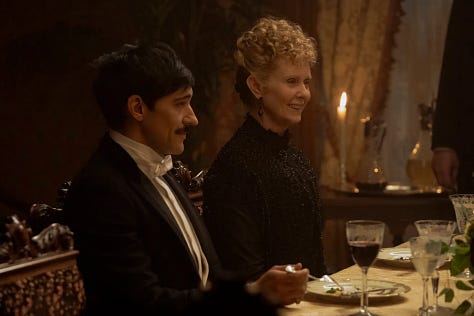
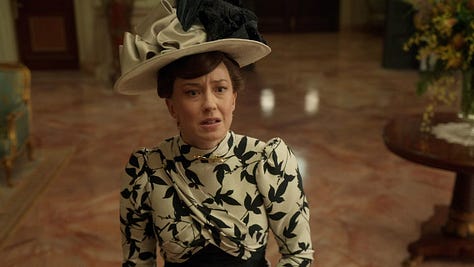
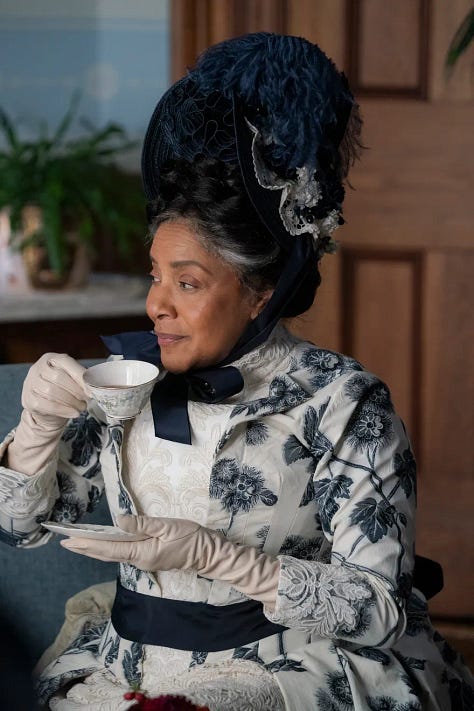
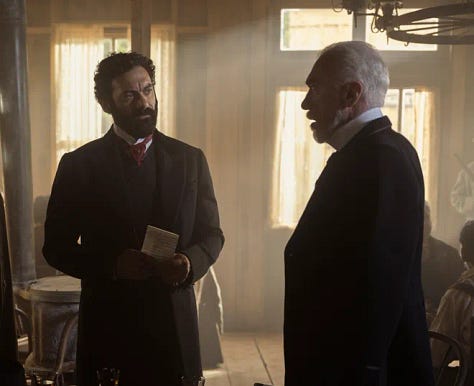

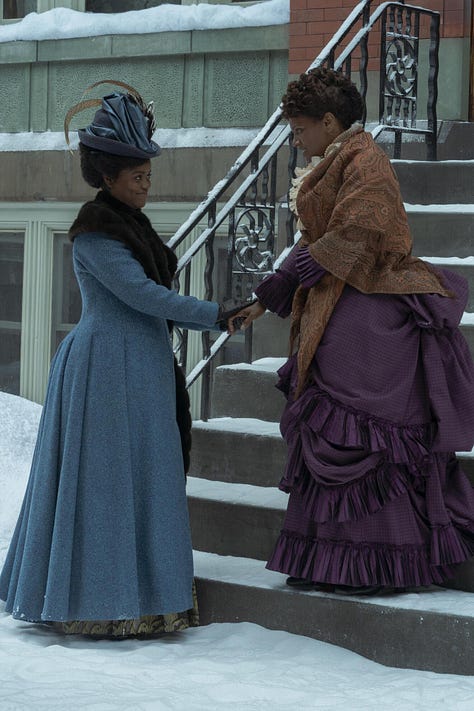
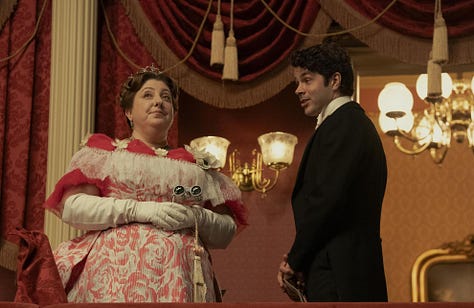
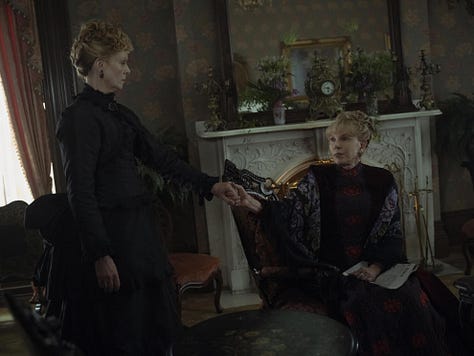
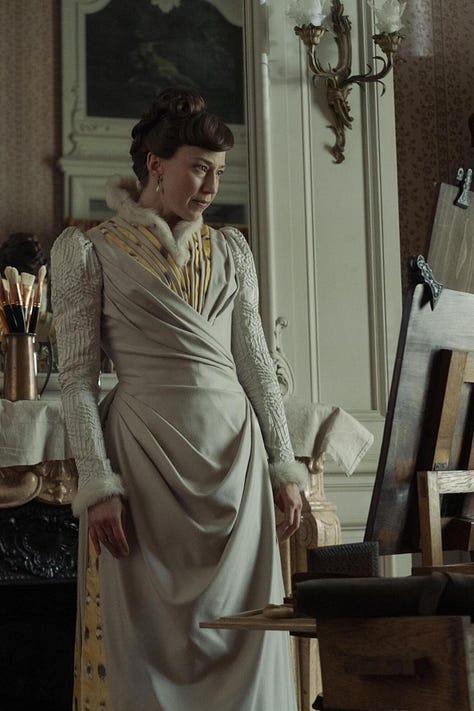
This season also gives more attention to supporting characters who have long remained in the background. Jack (Ben Ahlers), a young footman, begins to design his own inventions, offering a glimpse into the aspirations of working-class characters. His journey provides a thoughtful contrast to the high-stakes maneuvering of his wealthy employers.
Aurora Fane and Ward McAllister continue to orbit the social sphere, but their influence is increasingly questioned by newer players eager to redefine the rules of high society.
As expected from a Julian Fellowes production, the sets and costumes in The Gilded Age Season 3 are breathtaking. From glittering ballroom scenes to dusty railroad landscapes in the West, the show transports viewers to a richly detailed world. Costume design remains impeccable, with fashion playing a crucial role in expressing character evolution and status.
While firmly set in the 19th century, The Gilded Age Season 3 boldly addresses topics that feel strikingly modern. Issues like gender inequality, racial injustice, class division, and the tension between tradition and progress are woven throughout the season’s narrative. The show’s willingness to explore divorce, homosexuality, and ambition through a historical lens is of meaning and relevance.
This season is easily on track to be a success one in both storytelling and production. Carrie Coon’s performance is a standout, bringing emotional complexity to a character that could easily have become a caricature. The writing is tighter, the stakes higher, and the themes more resonant than ever.
The stellar ensemble delivers a compelling and emotionally satisfying season, cementing the show’s status as a top-tier period drama with both style and substance.
Episodes of The Gilded Age season 3 will release weekly on Sunday’s at 9:00 PM ET on HBO and will be available to stream on Max at the same time.

